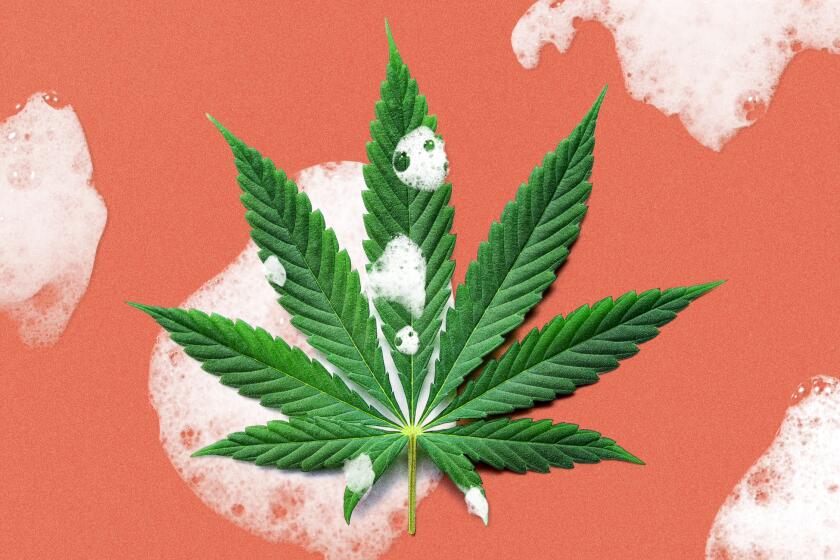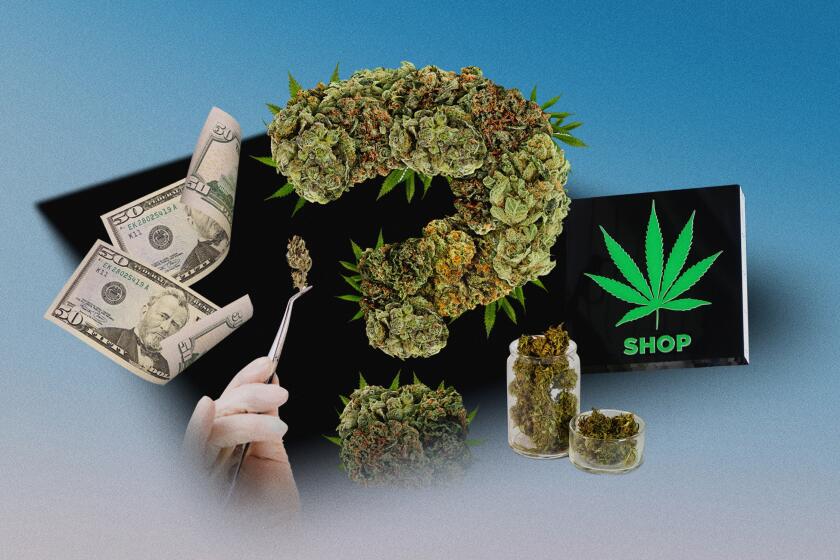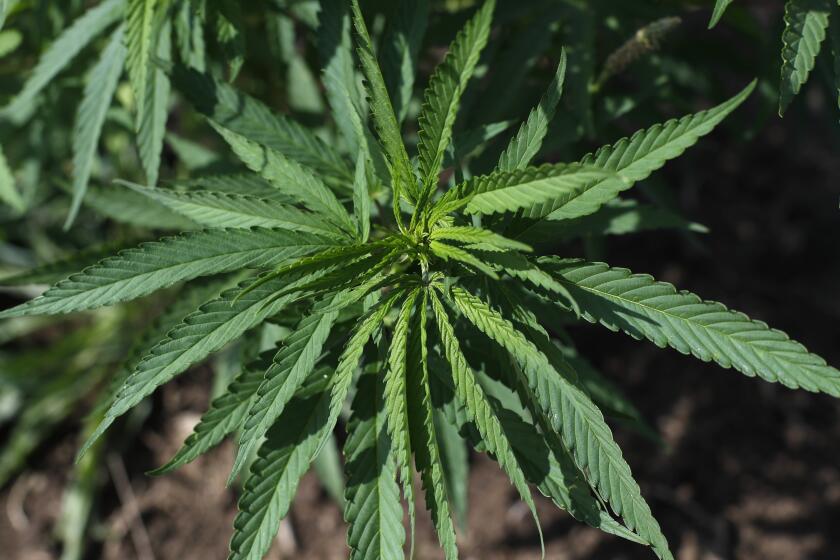How do you handle neighbors who smoke weed? And other burning weed questions answered
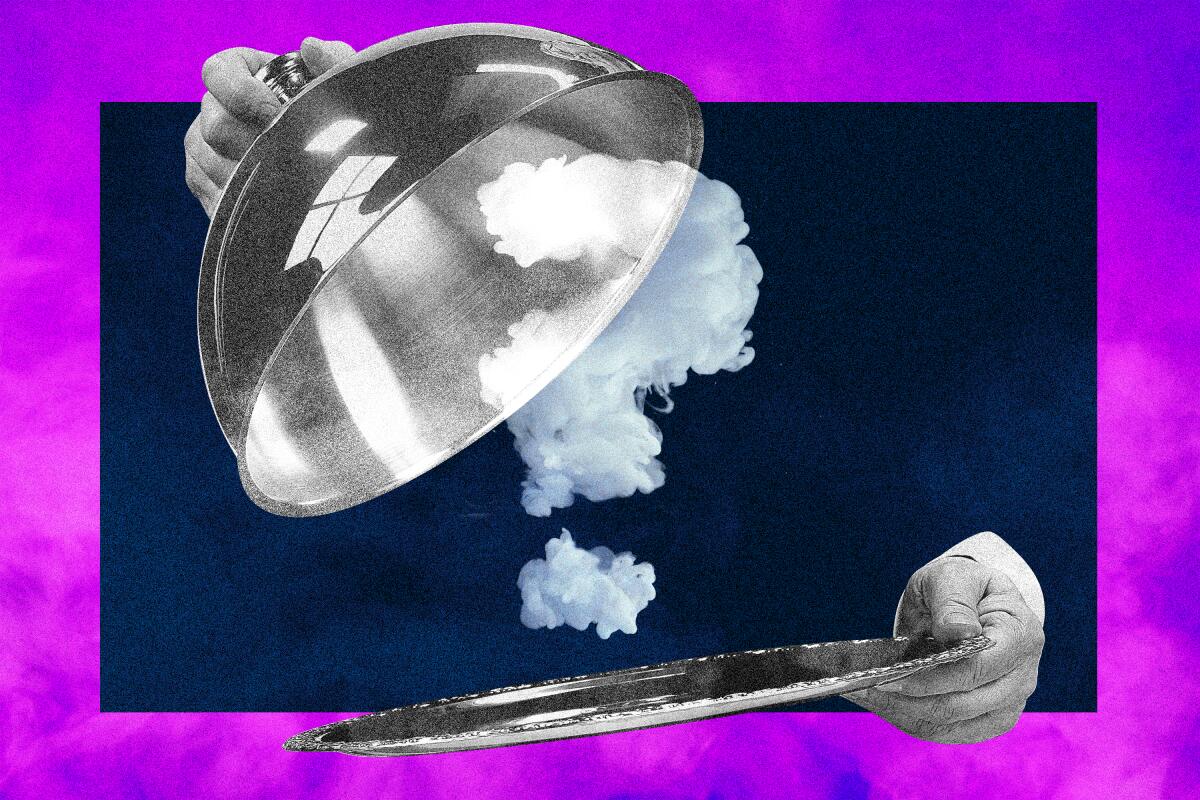
What should you do if your pot-smoking neighbor is stinking up your yard? Why aren’t there any legally licensed consumption lounges in the city of Los Angeles but somehow four in West Hollywood? And what do I need to know about using cannabis to combat the side effects of chemotherapy?
Those are a few of the burning weed questions that have landed in my inbox lately.
And just in time for the 4/20 high holiday on the horizon, I’ve got answers to these canna-conundrums — and more — from the pros who know.
What happens when your dog eats your weed? Where are the boomer stoners at? Here are some of your burning weed questions asked — and answered.
I live in the hills on a large lot. My neighbor’s tenant sometimes smokes weed outside his abode, and the smell drifts into my yard. The back of my neighbor’s house is next to my front yard. When I walk my dogs around my yard, it smells terrible, and I have to go inside. Can I do anything? Tell the landlord or any other recourse? I’m also concerned that when I put the house up for sale in the next two years, potential buyers viewing the property might encounter the smell. — S.O.
I put this question to Stanton, Calif.-based attorneys Craig and Marc Wasserman, a.k.a. the Pot Brothers at Law. “If the landlord does not allow cannabis use, a complaint can lead to eviction. The complaining neighbor could file a nuisance complaint, which most likely will not prevail,” Craig Wasserman wrote in an email to The Times.
“However, a cannabis patient with a physician recommendation is protected under Prop[osition] 215 and can smoke cannabis anywhere, except 5 places: within 1000 feet of a school or youth facility, a no-smoking zone (such as a landlord’s rule), in a motor vehicle that’s operating, while operating a boat and on a school bus.
“We suggest the complaining neighbor politely discuss the matter, and perhaps there is a friendly resolution involving the use of [a] nice air freshener.”
In a follow-up phone call with The Times, Marc Wasserman said that in the two decades-plus of focusing on cannabis-related legal issues, the Pot Brothers at Law have fielded about a dozen phone calls tackling the thorny issue of complaining neighbors, and the brothers always recommend trying to talk it out directly — neighbor to neighbor — before getting the landlord involved and risking getting someone evicted.
“In this case, it doesn’t seem like there’s a landlord involved yet, so there’s a chance to deal with it amicably,” he said. “I had a client who had a neighbor who was smelling [cannabis smoke], and they figured out how to keep the smell away. [The answer] might be as simple as going to a different part of the house and closing the window, or maybe it’s setting up a fan to blow the smoke in a different direction. ... It doesn’t need to go right to ‘I’m going to sue you’ or ‘I’m going to tell on you.’”
I’m a big wax person and I’m looking for a new brand. The biggest thing to me is lung health, so if I’m trying something new, I want to make sure it’s nice and clean. — B.B.
The world of clean weed is definitely confusing to navigate, something I discovered firsthand while researching a story about California’s clean weed scene. For those who want to consume cannabis concentrates like wax, there are basically two options for separating the gooey, sometimes-semi-solid stuff that gets you high from the plant material.
What I learned was that the most common (and cost-efficient) method uses chemical solvents — often butane, sometimes carbon dioxide or ethanol — which are later removed. (All legally sold concentrates in California are tested to ensure they’re below state-mandated levels of these chemicals.) Another way doesn’t use any solvents — only a combination of temperature, agitation and pressure. This is often what people are referring to when they talk about “clean weed.” To find concentrates made this way, look (or ask your budtender) for products labeled “solventless.”
Two of the brands whose longevity in the solventless space makes them good places to start an exploration of clean weed are Oakland-based Jetty Extracts, which got into the game in 2016, and 710 Labs, which brought its solventless expertise to the Golden State (from Colorado) the same year.
Increased consumer demand means more chemical-free cannabis options, but finding them isn’t as easy as looking for “organic” on the label.
[My friend’s mom] is currently undergoing chemo and is trying to find some more ways to deal with the loss of appetite. Do you know any reliable sources? — S.B.
Unlike a lot of claims about cannabis’ therapeutic value, its ability to help with the severe nausea, vomiting and appetite loss that often accompany chemotherapy treatment is not in dispute, said Dr. Peter Grinspoon, a Boston-based physician and 27-year medical cannabis specialist. Even so, he cautions your friend (or your friend’s mom) to have a conversation with the doctor.
“It’s always important to talk to the oncologist [first] because of potential medication interactions,” Grinspoon said. “Oncologists are becoming pretty savvy about this stuff because such a high percentage of people [undergoing] chemotherapy are using cannabis.”
Assuming your friend’s mom gets the all-clear on that front, the next step is to choose an appropriate consumption method. Grinspoon said that while edibles are usually preferable (“No doctor is going to recommend the lung irritation that comes with inhalation,” he said), using a dry-herb vaporizer that heats the plant material to release the cannabinoids but doesn’t combust it may be preferable unless there are lung-health issues.
“If you feel like you’re going to barf from the chemotherapy, you won’t feel like eating an edible and you won’t want to wait an hour for an edible to kick in,” he said. “I think the one scenario you could really make the argument for inhaled cannabis is when someone’s suffering from chemo.”
Visiting an L.A. cannabis dispensary for the first time can feel intimidating. This beginner’s guide explains everything you need to know to be prepared.
Herb-wise, Grinspoon doesn’t have any specific cultivar, terpene or cannabinoid recommendations to help with appetite, only a ratio to keep in mind. “In a perfect world, people would use something that’s like 15% THC and 5% CBD rather than 22% THC and 0% CBD, but that’s not always easy to find. ... It’s the THC in the cannabis [that’s key], and a little bit of CBD is helpful because it mitigates some of the side effects of the THC.”
After that, the last thing to figure out is proper dosage, which is particularly important for someone who has little to no prior experience with the plant. Grinspoon recommends a “start low and go slow” approach. Therefore, begin with a small amount, wait to see how the pot and the patient interact and then adjust as necessary. “With any drug, you want to use the lowest effective dose,” he said. “But also, if you’ve ever smoked too much, you know what that feels like, and that’s the last thing you want if you have cancer and [are undergoing] chemotherapy.”
As for the last part of your question about reliable sources (about cannabis generally or cannabis as medicine specifically), that’s not something you’re likely to find easily online. As Grinspoon put it: “Online information is so contradictory. Everything tends to fall into two camps: It’s either a miracle cure or it’s satanic lettuce.” He knows of what he speaks: These two warring camps — and how to reconcile them — happen to be the subject of his 2023 book, “Seeing Through the Smoke: An Expert Doctor Untangles the Truth About Cannabis.” Although not a resource guide per se, it’s written with the scientific rigor you’d expect from a medical doctor and is chock-full of information that will be of interest to anyone with an opinion on cannabis. I have a copy on the corner of my desk at all times and can’t recommend it highly enough.
How come cities like West Hollywood, Palm Springs and San Francisco have multiple legally permitted cannabis consumption lounges, and Los Angeles doesn’t have any? — A.T.
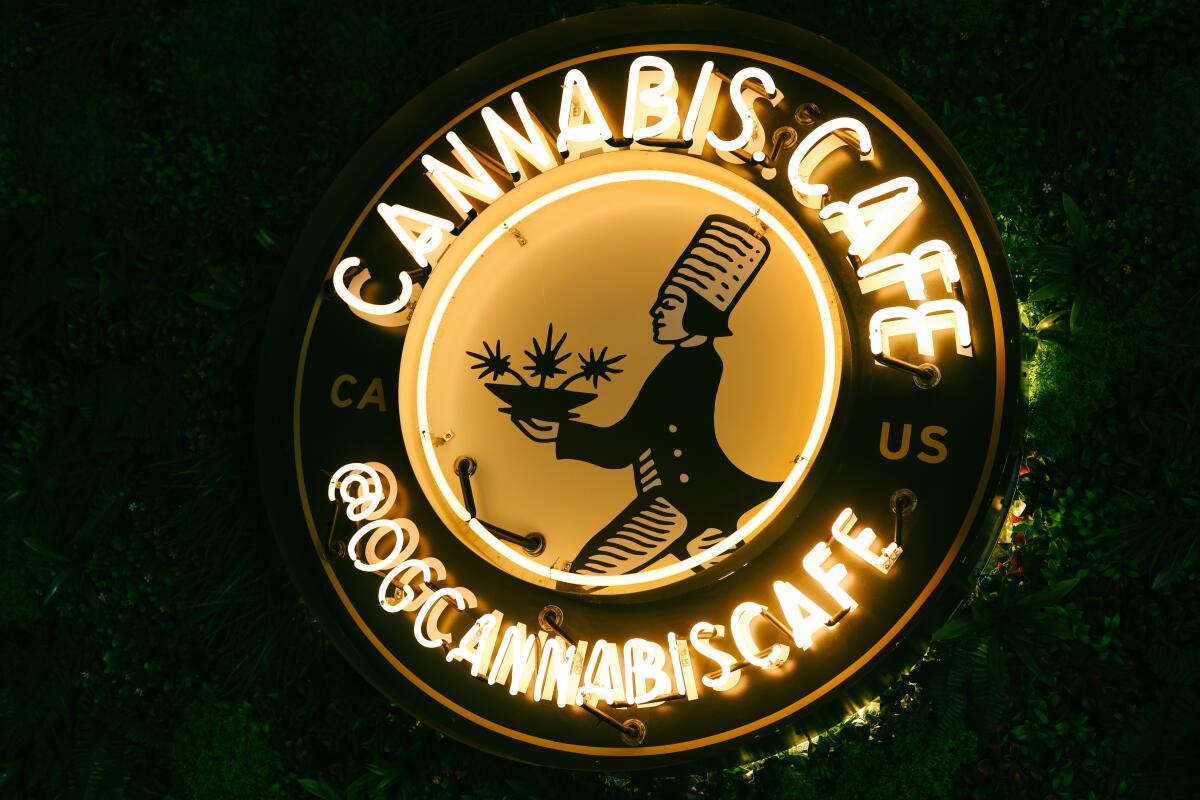
In full disclosure, this wasn’t a reader-submitted question but one I’ve been asked dozens of times over the last couple of years. It’s one that crosses my mind every time I write about a new consumption lounge opening in West Hollywood, which, despite being a city of just 1.9 square miles, is now home to four (with a fifth in the works), or visit places where public on-premises pot puffing is permitted, from cities (San Francisco and Palm Springs) to small towns (Ukiah and Philo) in California.
So why not L.A.? Are there plans to allow consumption lounges to open in the city eventually? And, if so, what might the timetable look like?
“The City of Los Angeles has a saturated cannabis market with thousands of noncompliant entities,” Mayor Karen Bass’ press secretary Clara Karger said in an emailed response to my inquiry. “The priority of the Department of Cannabis Regulation is on supporting existing businesses, especially social equity partners and helping more businesses come into compliance. Additionally, with the potential for more input from Sacramento regarding food service in consumption lounges, it may be too early for the City to be able to draft a policy for this business model.”
In other words, blame it mostly on L.A.’s illegal pot shop problem — and a little bit on Gov. Gavin Newsom’s October 2023 veto of a bill that would have allowed for on-site sales of food and beverages at consumption lounges, the latter of which seems to have been solved — legally — by at least two of West Hollywood’s consumption lounges that also serve food. (The workaround involves keeping the food and cannabis concerns as separate business entities. At PleasureMed, for example, the kitchen is in an entirely different — but very close by — building.)
Karger didn’t offer a timeline, but she really didn’t have to. Anyone familiar with the L.A. cannabis scene will tell you that if the opening of legal consumption lounges is contingent on getting the rest of the city’s pot problems fixed first, Vatican City seems more likely to open a weed lounge before L.A. does.
Burning Questions?
Are you a cannabis consumer with a burning question about the wide, wide world of weed — dispensary visits or otherwise?
Then fire off an email to me at adam.tschorn@latimes.com. If I can’t answer it, I’ll find someone who can.
More to Read
Sign up for The Wild
We’ll help you find the best places to hike, bike and run, as well as the perfect silent spots for meditation and yoga.
You may occasionally receive promotional content from the Los Angeles Times.


